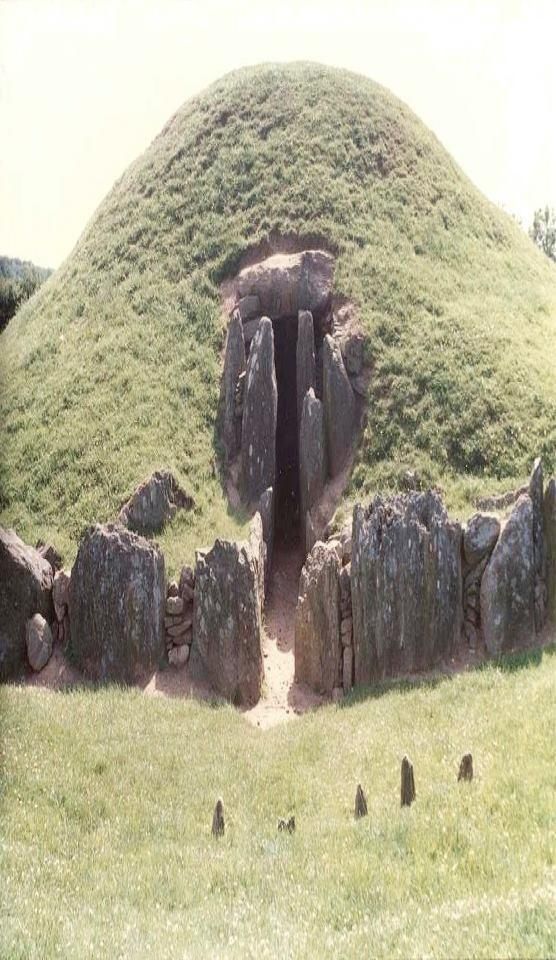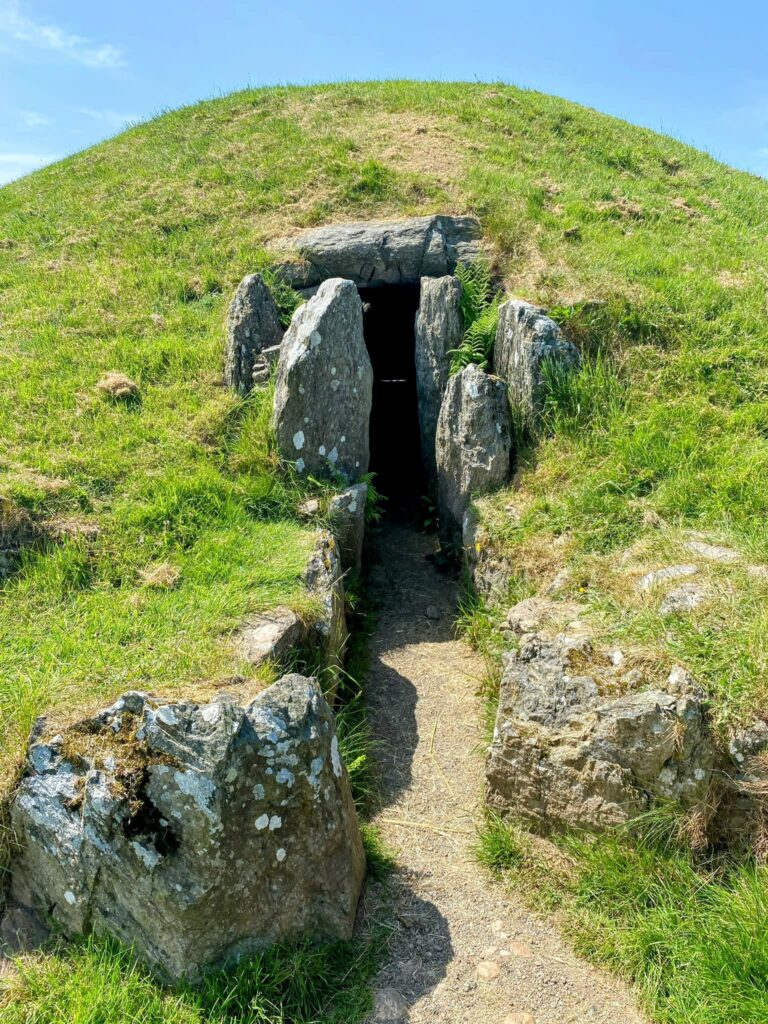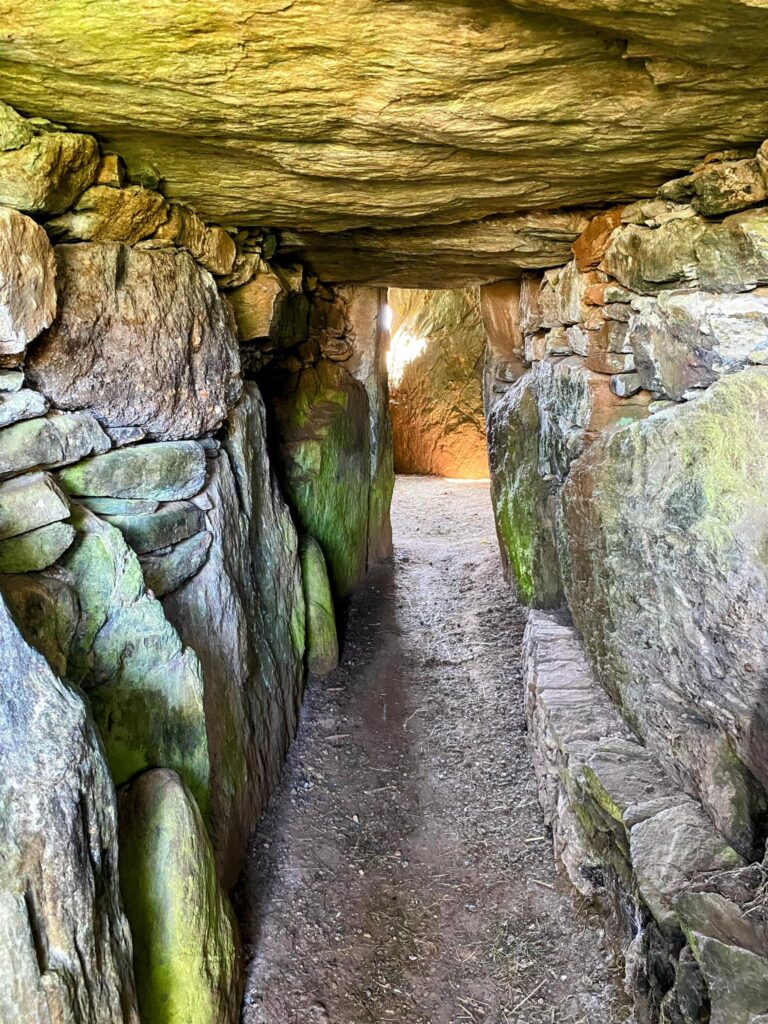Bryn Celli Ddu is a Neolithic burial mound located on the Welsh island of Anglesey near Llanddaniel Fab. It was built approximately 5,000 years ago and is one of the most interesting prehistoric monuments in the UK. It is estimated that the site was constructed during the late Neolithic period, around 3000 BC. Excavations have revealed that Bryn Celli Ddu may have been used for ritual purposes, and its unique features have made it an object of fascination for archaeologists and visitors alike.

The site is located on a low hill and is surrounded by a circular ditch and bank, which was likely originally topped by wooden palisades. The circular enclosure around the mound suggests that it was used for communal activities. The burial chamber is accessed by a narrow passage aligned with the rising sun on the summer solstice. This alignment reveals the sophisticated astronomical knowledge of the Neolithic people who constructed the site.

The chamber itself is made up of a central pillar surrounded by four stone slabs. During excavations of the site, archaeologists found fragments of human bones and pottery inside the burial chamber. The remains of two individuals, one male and one female, were also discovered. The presence of these remains suggests that Bryn Celli Ddu was used for the burial of prominent members of the community.

One of the most remarkable features of Bryn Celli Ddu is the patterns carved into the stone of the burial chamber. These carvings depict spirals and zigzags, and have been interpreted by some scholars as symbolic representations of the journey to the afterlife. Such carvings are common in Neolithic monuments across Europe, and their presence at Bryn Celli Ddu suggests that the people who constructed the site were part of a wider cultural network.

Bryn Celli Ddu remains an enigmatic monument to this day, but recent advances in archaeological research have allowed scholars to understand more about its construction and use. Excavations at the site have revealed the presence of animal bones, evidence of feasting, and the remains of cremations, suggesting that the site was used for communal gatherings and feasts as well as burials.

Today, the site is open to the public and draws visitors from around the world. It is an important landmark in the landscape of Anglesey and a testament to the skill and ingenuity of the Neolithic people who once inhabited the area. Visitors can take guided tours of the site, explore the surrounding landscape, and learn about the rich history of this remarkable monument.

